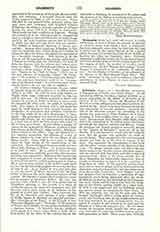

Solemnity (from Lat. solet and annus), a yearly celebration, is used to denote the amount of intrinsic or extrinsic pomp with which a feast is celebrated. Intrinsic solemnity arises from the fact that the feast is primarium for the entire Church, or for a special place, because in it a saint was born, lived, or died; or because his relics are honored there. Extrinsic solemnity is added by feriatio, by the number of sacred ministers, decoration of the church or adjoining streets, the ringing of bells, the number of candles, costly vestments, etc. In the “Roman Martyrology” Easter Sunday is announced as the “solemnity of solemnities”; the first Sunday of October, as the solemnity of the Rosary of the Most Blessed Virgin Mary. The term “solemnity” is also used in contracts, especially matrimony, in votive Masses, in vows, and in ecclesiastical trials.
FRANCIS MERSHMAN

